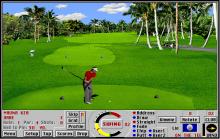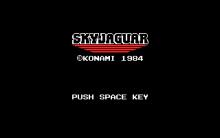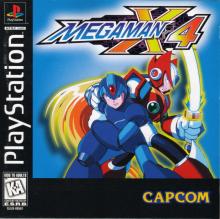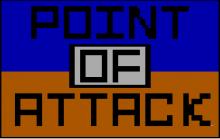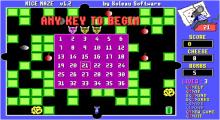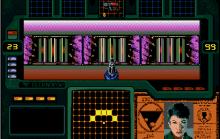Blockout
Press Keyboard right side: Alt+Enter keys to switch to full screen game play, and Alt+Enter keys to return.
How to play Blockout
Game Controls
- Q / W / E – Rotate block (counter-clockwise)
- A / S / D – Rotate block (clockwise)
- ⬅️ ➡️ ⬆️ ⬇️ – Move block (left, right, up, down)
- Space Bar – Drop block
- P – Pause / Resume game
- O – Sound On / Off
- M – Main Menu
- Esc – Abort game
Blockout Description
Blockout, released in 1989, is a groundbreaking 3D puzzle game that took the classic Tetris formula and added a fresh twist. By introducing a top-down perspective and complex 3D mechanics, Blockout created a unique and engaging challenge for players. If you're a fan of Tetris, you'll definitely want to explore this classic. You can play it on Classic Reload and experience the game that helped shape the puzzle genre.
History & Developer: A Pioneer in 3D Puzzle Games
Blockout was developed by P.Z. Karen Co. Development Group and Logical Design Works, with its release published by California Dreams in 1989. It quickly became a hit, available on various platforms, including MS-DOS, Amiga, Atari ST, Commodore 64, Sega Genesis, and even Arcade systems. Blockout marked an important step in the evolution of puzzle games, pushing the boundaries of the traditional block-stacking formula seen in Tetris.

While the gameplay might seem familiar, the 3D mechanics added a new layer of complexity, creating a fresh and exciting challenge for puzzle enthusiasts. The game’s innovative use of 3D space is one of the reasons it remains a beloved classic.
Gameplay: A 3D Block-Stacking Challenge
In Blockout, players view a rectangular pit from above, where polycube blocks fall toward the bottom. But unlike Tetris, where pieces only rotate in two dimensions, Blockout allows players to rotate blocks along all three axes, making the placement more intricate. The goal remains the same as Tetris — fill layers completely to make them disappear. However, the three-dimensional aspect adds a whole new level of difficulty.

Key Features of Blockout:
- 3D Rotation: Mastering the rotation of the polycube blocks along three axes is crucial. It’s the key to success in this game, so practice controlling them efficiently.
- Layer Clearing: As blocks fall into the pit, your task is to complete layers. Each completed layer disappears, but the faster the blocks fall, the less time you have to plan.
- Pit Dimensions Change: As the game progresses, the dimensions of the pit change, increasing the difficulty. The faster the blocks fall, the harder it becomes to clear layers efficiently.
Closest Modern Adaptation: Keeping the Legacy Alive
Though Blockout (1989) remains a standout in the world of puzzle games, its influence continues in modern titles that share similar mechanics. For example, BlockOut II is an open-source remake of the original game, offering a nostalgic yet updated experience for new and old players alike.

Another game that echoes Blockout’s 3D mechanics is Tetrisphere (1997). In Tetrisphere, players clear layers of blocks on a spherical playing field, creating a more dynamic and immersive 3D environment. If you’re looking for something with a bit more of a physics-based challenge, games like Tricky Towers introduce a similar stacking element, but with unstable structures that add an extra layer of complexity.
Related Games to Explore
If you enjoyed Blockout, you might also like other classic block-stacking puzzle games that continue the tradition of challenging your mind. For example, Super Tetris is the original game that inspired countless variations, including Blockout itself. For another twist on block-stacking, try Welltris, where the blocks fall into a 3D well, similar to Blockout’s layout.

If you're looking for a different type of stacking challenge, Columns will have you matching colored gems in a vertical stacking puzzle. Meanwhile, Klax offers a tile-stacking challenge with a unique conveyor belt mechanic, adding a fresh dynamic to the genre.
A Timeless Classic
Blockout (1989) was one of the earliest games to experiment with 3D puzzle mechanics, making it a significant milestone in the world of puzzle games. Its influence can still be seen today in many modern titles that blend physics, strategy, and creativity. If you're a fan of games like Tetris and Welltris, then Blockout is a must-play.
You can now play Blockout, a puzzle video game here on Classic Reload. Your goal in the game is to solve a real-time packing problem by forming complete rows. The more rows you complete, the higher your points. Hit the play button to start!
Cheats/Hints/Walkthroughs for Blockout
Here are a few tips to help you master Blockout (1989) and get the most out of your gameplay experience:
Master Rotation
Since Blockout allows you to rotate the blocks along three axes, it’s essential to practice controlling them efficiently. Getting comfortable with how each block moves and rotates in 3D space will give you a big advantage as you progress.
Plan Ahead
The game’s top-down view can be tricky to navigate. Try to visualize where each block will land before dropping it. The more you plan ahead, the easier it will be to fit pieces into tight spaces and complete layers.
Clear Layers Quickly
Don’t let the blocks stack too high — the higher the stack, the less room you have for maneuvering. Aim to clear layers quickly to avoid the danger of running out of space. The faster you clear them, the more points you’ll score.
Use Fast Drop Wisely
Pressing the fast drop button can be helpful when you’re confident about where a block should land. However, don’t rely on it too much. Rushing through the placement can lead to mistakes, so make sure to use it wisely.
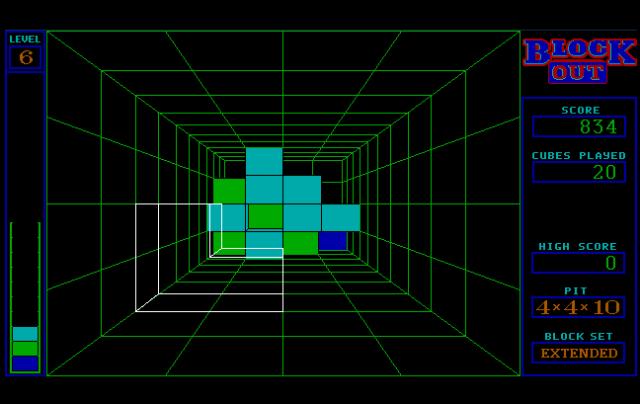
Blockout - additional information








